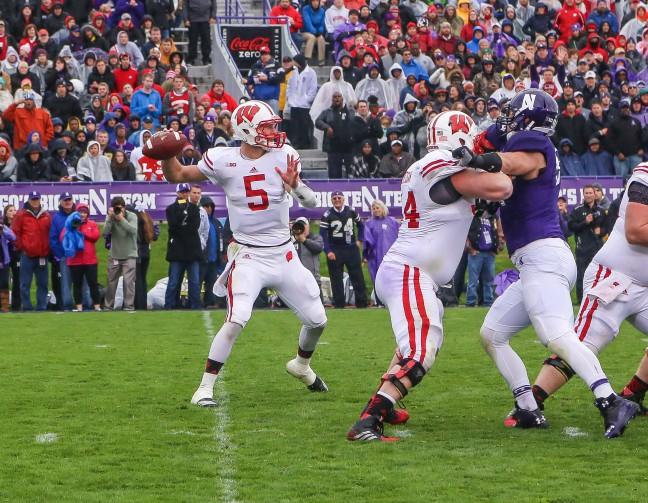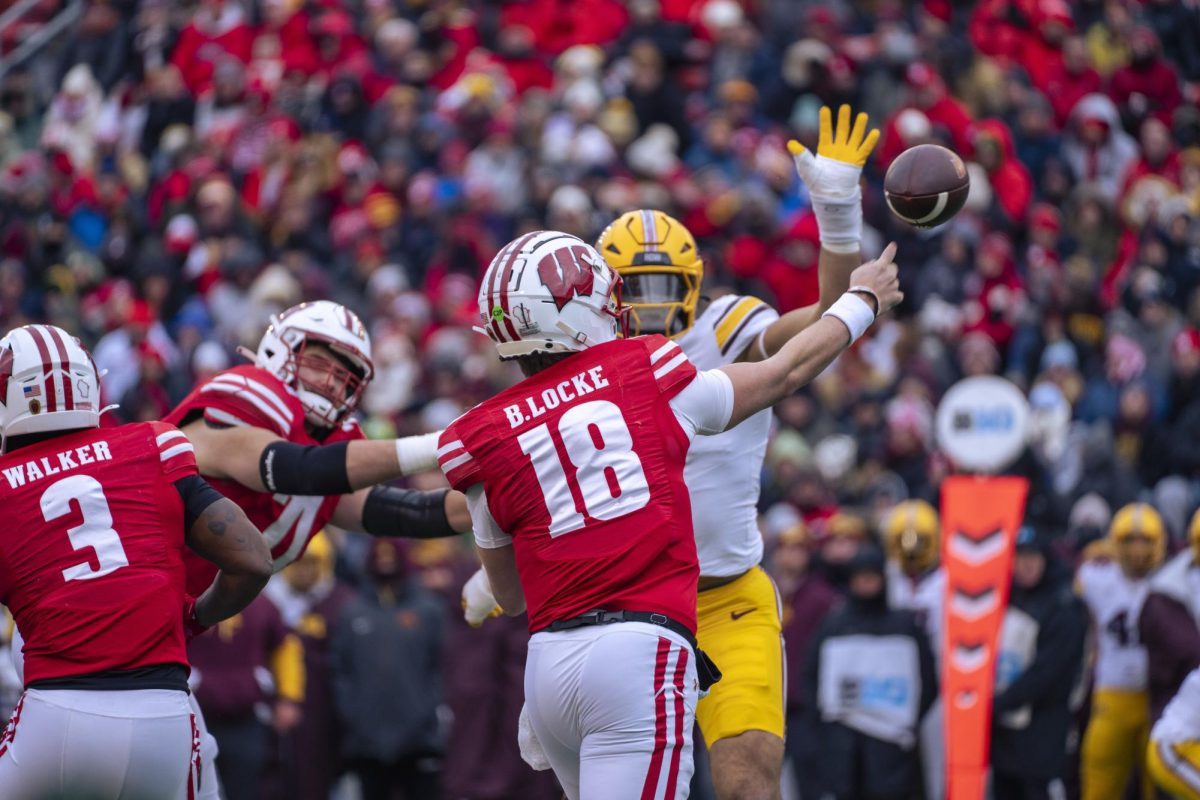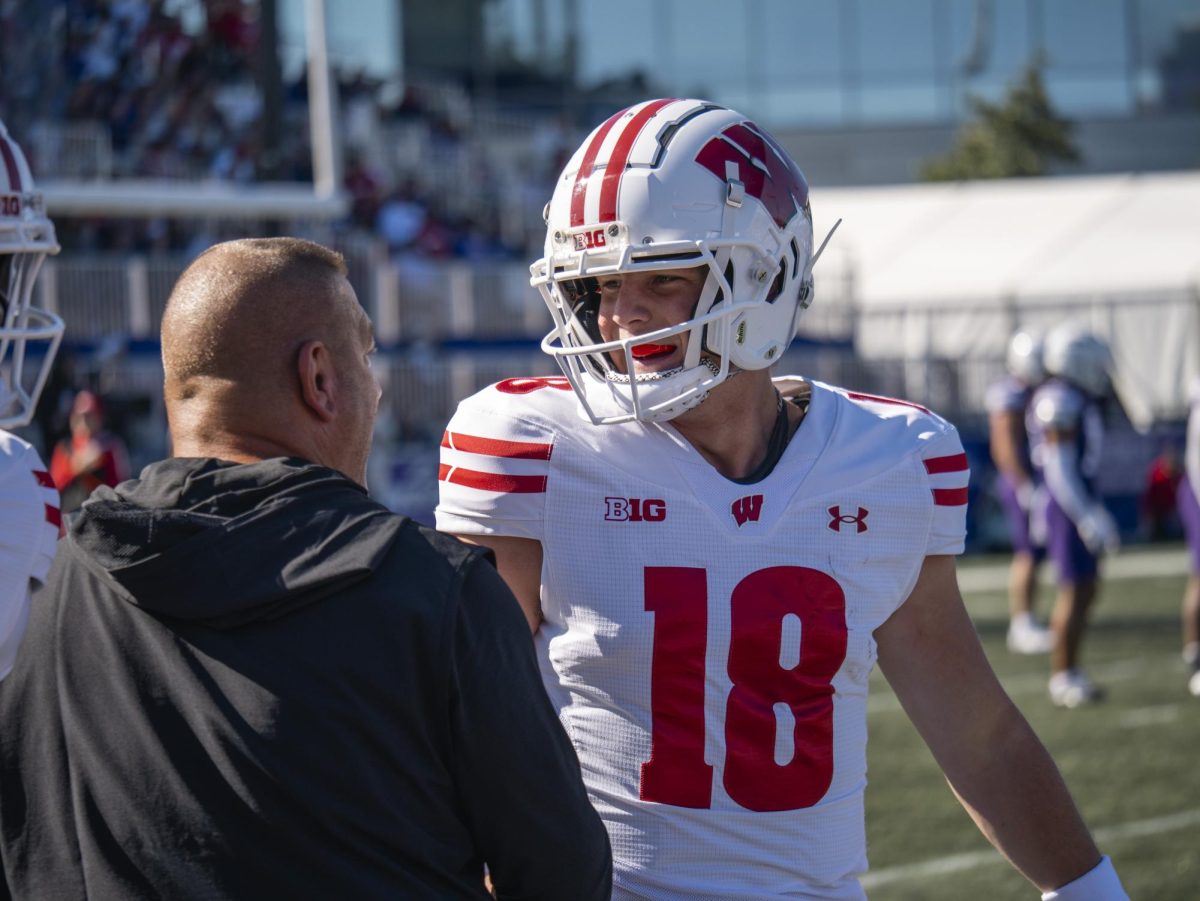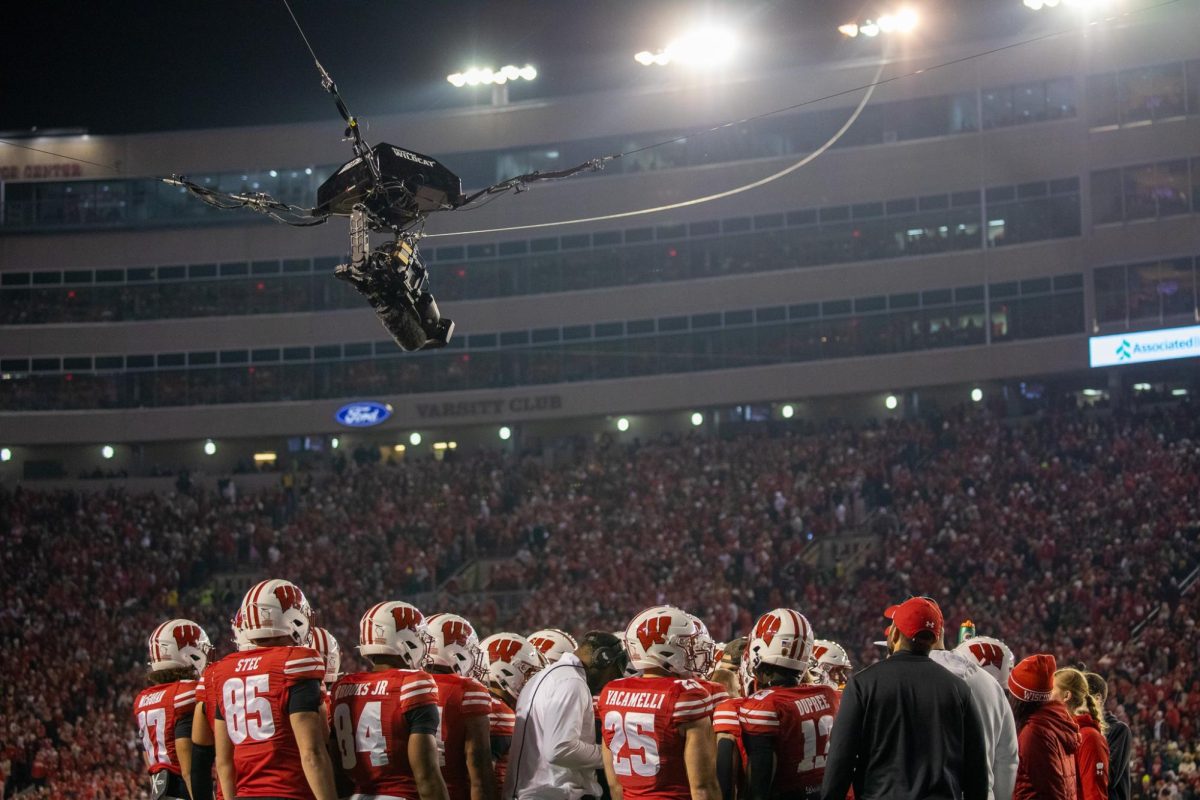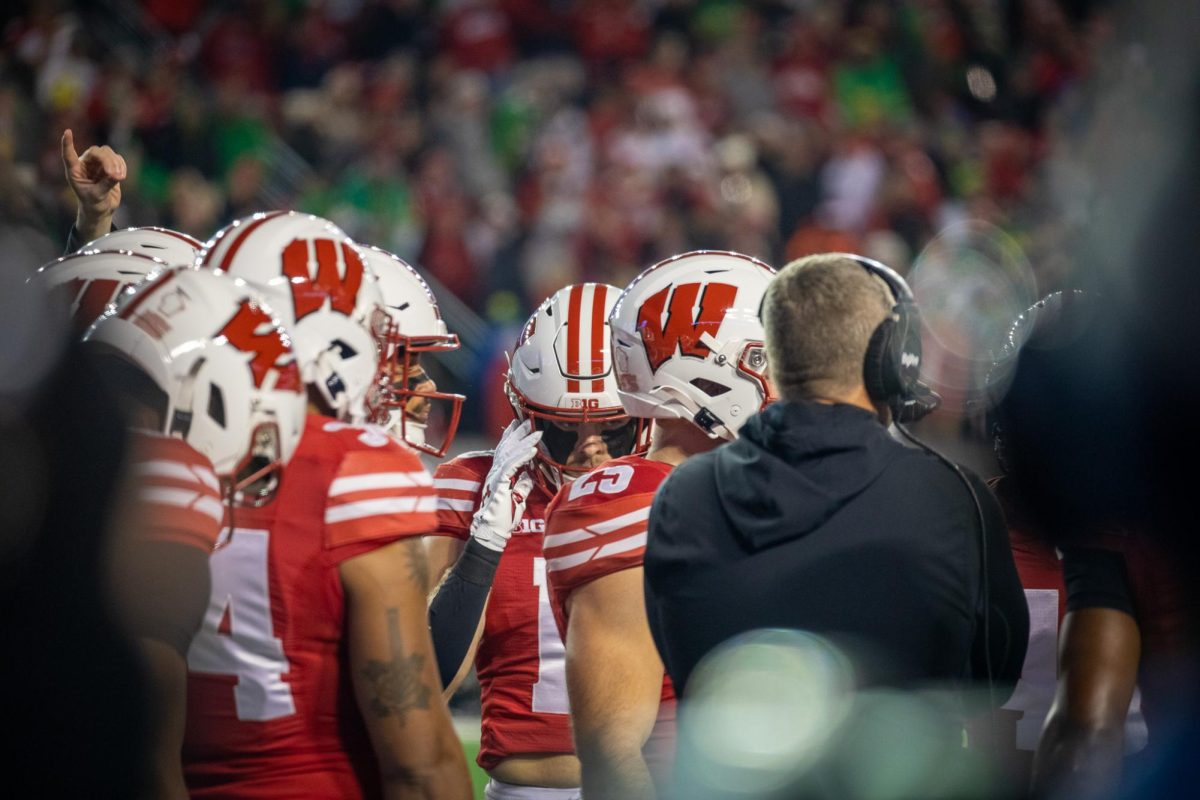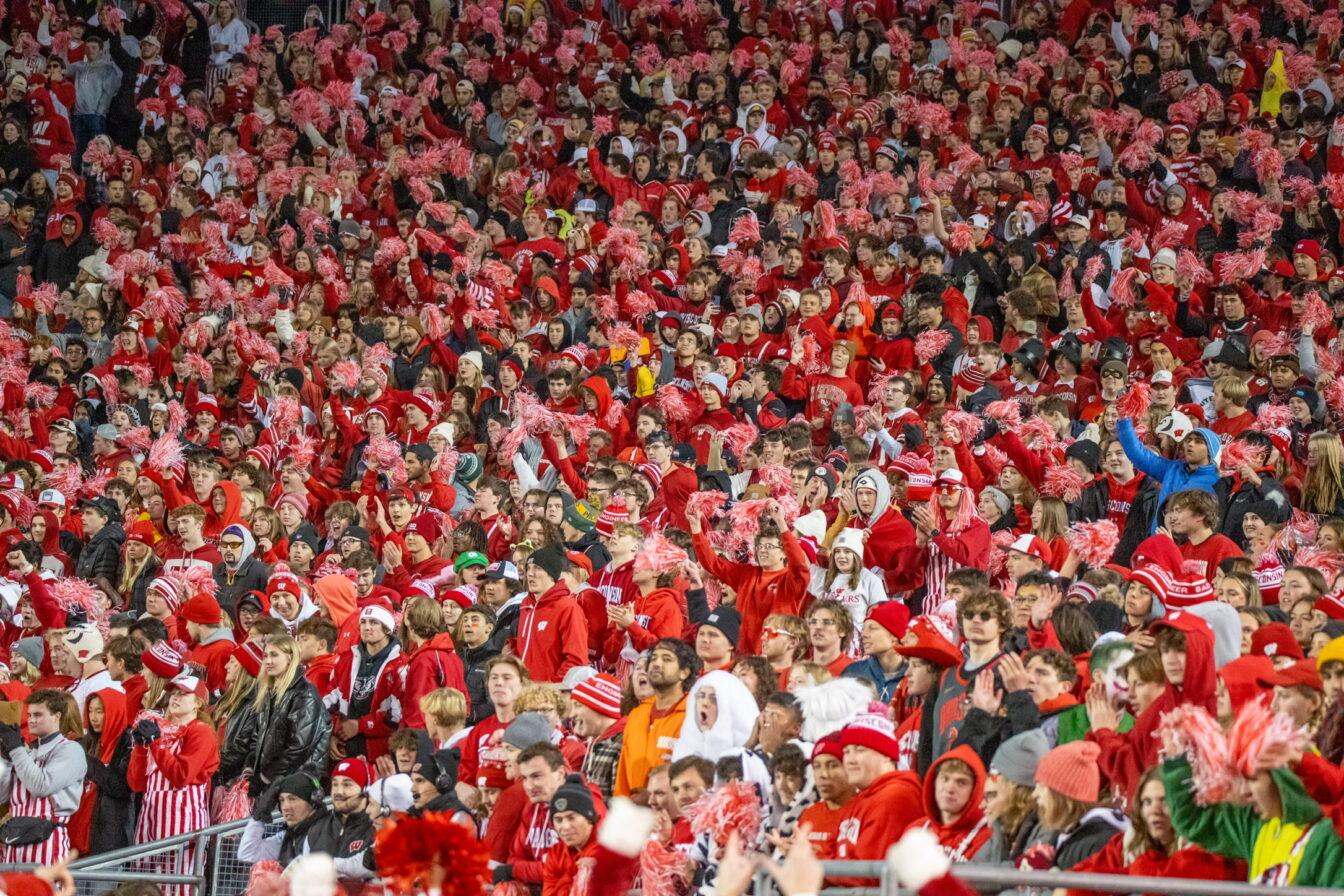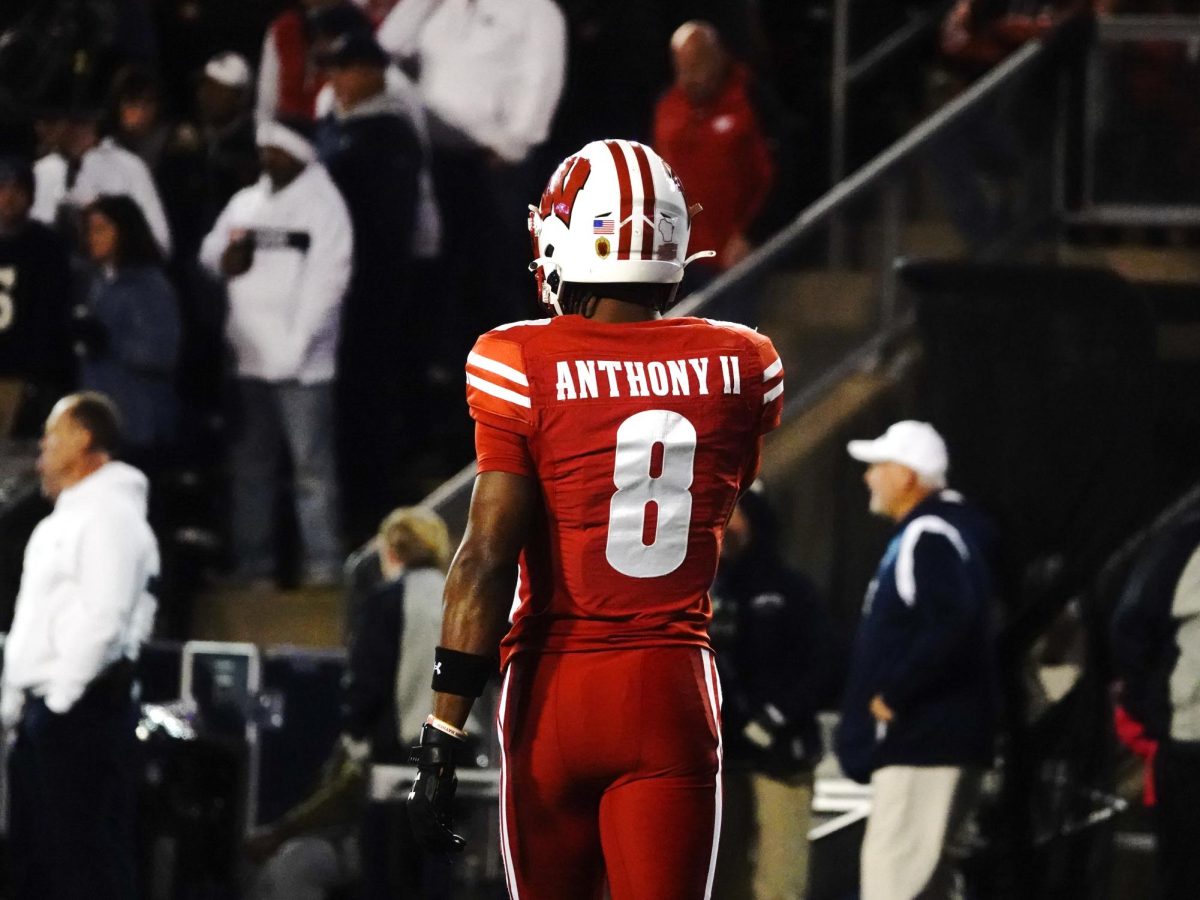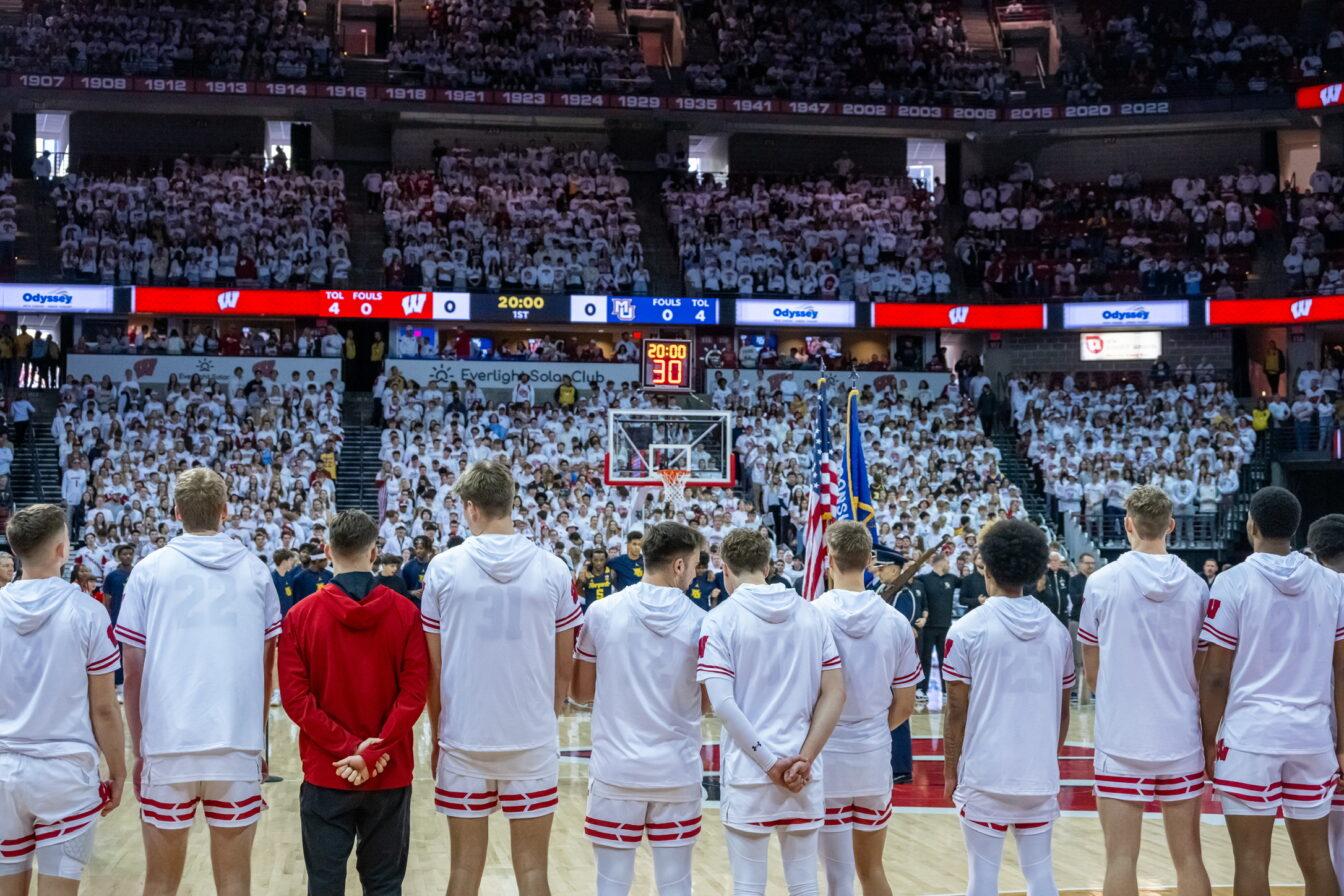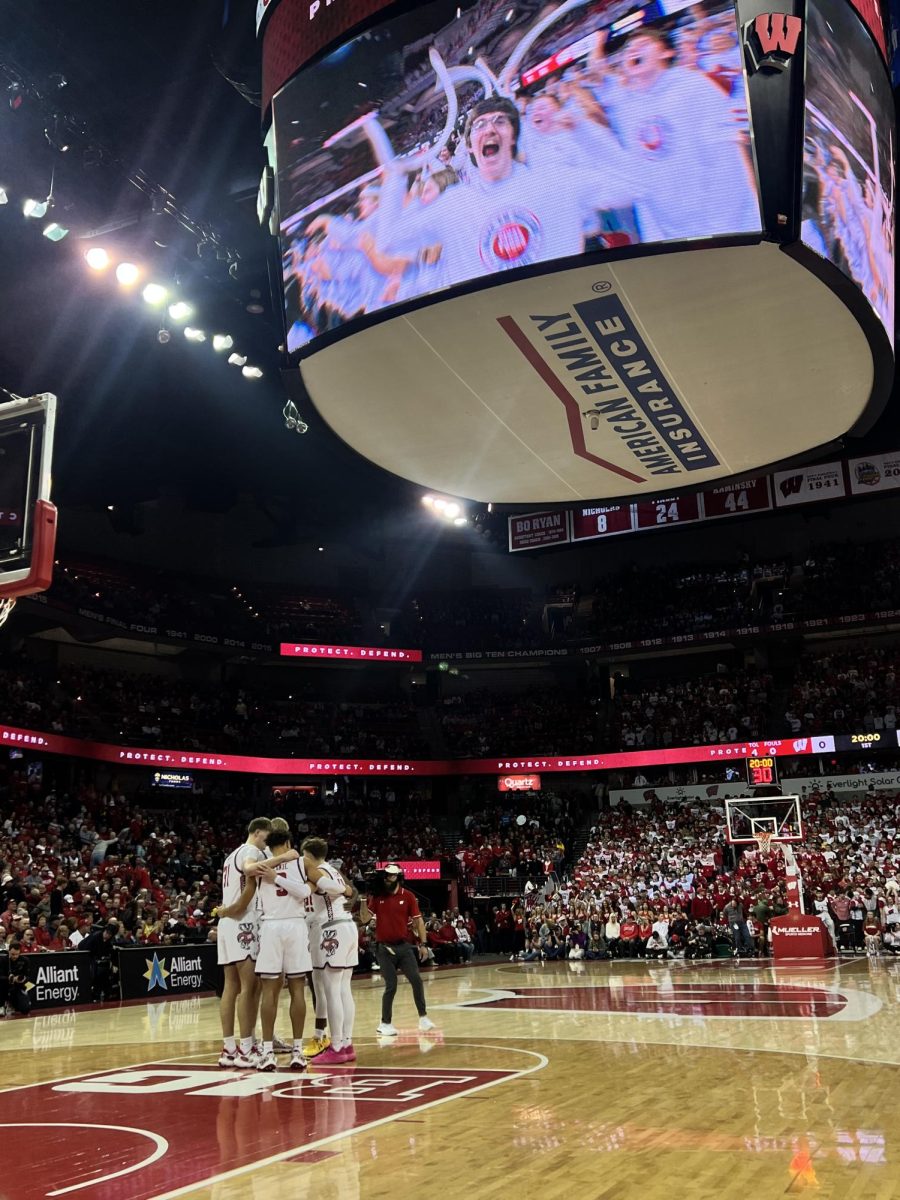“If you have two quarterbacks, you have none” is one of the most well-known clichés in football. However, the Wisconsin football team is trying to put an end to the negativity surrounding the cliché beginning this weekend against Illinois.
University of Wisconsin head coach Gary Andersen said he will use both Tanner McEvoy and Joel Stave at quarterback this weekend after McEvoy – who started the team’s first four games – was benched in place of Stave just before halftime against Northwestern. Through four and a half games this season, McEvoy is 55-for-96 with five touchdowns and five interceptions, while throwing for only 629 yards.
“[McEvoy and Stave] could possibly both be on the field at the same time,” Andersen said. “I’m hoping that happens because I think that opens up a little can of worms for people to wonder what’s going to happen. So we’ll see if that takes place for a couple plays. We’ll also play them in different situations.”
However, Stave – who was essentially unable to play the first four games of the season with what can best be described as the “yips” – did not impress in his only half-game of football this season against the Wildcats last weekend. He was only 8-for-19 for 114 yards with one touchdown and a dismal three interceptions. Stave’s struggles certainly did not settle the situation at quarterback, and has turned the position into one of the biggest question marks for UW as they head into week six of the season.
In order to highlight the talent of both quarterbacks, Andersen has decided to play both quarterbacks this Saturday, even possibly at the same time, and go forward with one of the most risky strategies in football.
But how can a two-quarterback system possibly work?
Offensive coordinator Andy Ludwig thinks he has the answer. Ludwig ran a two-quarterback system while an offensive coordinator at Utah in 2007. Quarterbacks Brian Johnson and Tommy Grady combined for 1,822 yards with 12 touchdowns and eight interceptions, while averaging a 121.95 quarterback rating. The Utes finished with a 9-4 record and ended the season with a win over Navy in the Poinsettia Bowl.
When using two quarterbacks in a game, Ludwig sees the position as one that fits into the larger scheme of the offense. The offense doesn’t need to rely solely on the quarterback, but on all ten of the guys on the field in order to compose an offensive unit as a whole.
“It’s a real delicate balance,” Ludwig said of using two quarterbacks. “The most important thing is to stay within yourself and stay within the strength of the entire unit. Not deviate to match one player or the other. Just do what you do to put those quarterbacks in the best possible position.”
Based on what happened at Northwestern, both Ludwig and Andersen showed that they are willing to pull a struggling quarterback, as they did with McEvoy.
While the official starting quarterback is unknown, what is known is that whoever is playing better, whether it’s McEvoy or Stave, will likely take over and receive the bulk of the snaps.
“You’re going to play the player with the hot hand,” Ludwig said. “[Does] the course of the game, the course of the season dictate that? Absolutely. We want to put our best players on the field right now. We’re trying to figure out who is the best player at [quarterback].”
However, switching to the quarterback with the hot hand can force both quarterbacks into a sense of urgency, both on and off the field.
For McEvoy, it can be tough to stay on the sidelines – which he experienced this past Saturday – but it’s simply a matter of staying focused and being ready to go when the coaches put him in.
“I mean it is a challenge to stay in rhythm if you’re in for a series and you’re starting to get the hang of it and the next guy goes in,” McEvoy said. “But you just have to stay focused, stay loose and just keep watching the game and be ready when your numbers called.”
Much like McEvoy, Stave sees the sharing of snaps at quarterback as one where you have to stay ready. Although recognizing that it may be “tougher to get into a rhythm,” Stave said it will just be about making good use of your limited snaps.
While McEvoy and Stave will both certainly play quarterback at some point in Saturday’s game, Andersen has also alluded to the idea of both playing on the field at the same time with what will likely result in McEvoy lining up at wide receiver – a position he is familiar with. Andersen seems willing to try, especially with the lack of production out of the wide receivers so far this season.
“Yeah, that’s also something to sit back and discuss,” Andersen said of playing McEvoy at wide receiver. “The knowledge base and the ability for him to get out there [at wide receiver], there is a learning curve, again. But it’s a possibility. Let me put it that way.”
This would not be McEvoy’s first time at wide receiver with the Badgers. Last season, McEvoy played snaps at wide receiver in the opening game against UMass, before injuring his wrist and switching over to safety for the rest of the season. Although he didn’t catch any passes in his short stint at the position, it’s one McEvoy is comfortable with.
“I used to play [wide receiver] back in high school and I used to love the position,” McEvoy said. “If that’s what [the coaches] want, then I’ll go out there and try to execute whatever they want me to do. But whatever it takes to win, I’m on board.”
The bottom line is that the success of a two-quarterback system might just come down to the talent of the two quarterbacks. While McEvoy and Stave have their own strengths and weaknesses, Stave believes the pieces are there to make this old football cliché successful.
“I think we have great players,” Stave said. “I think me and Tanner [McEvoy] can both do a lot of good things and we’re both very different quarterbacks. I think if used correctly, and I can’t say I know necessarily how that is or how it’s going to work, I think we have the players in the system that can make it work.”


